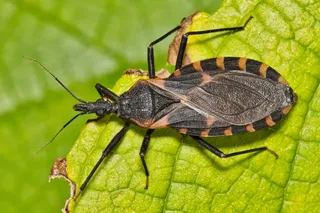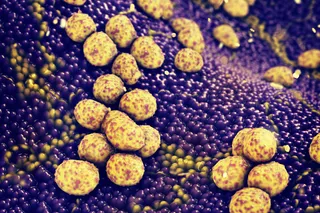I have often said that I tend to see "group selection" as a lesser evolutionary force when set against lower levels of evolutionary processes, e.g., "individual" or "gene" level selection. By group selection I do not mean pro-social tendencies, or the success of individuals who band together as a group, but rather
evolutionary processes which can not be reduced down to a lower level of selection
. In other words, evolution is acting directly upon the group as an emergent property of a collection of individuals. My skepticism toward groups selection is conventional and orthodox: evolutionary change induced by natural selection is, ceteris paribus, proportional to the variation in fitness correlated with heritable genetic variation. In other words, if genetic variation is uncorrelated with fitness evolution via natural selection will not occur. If there is no genetically heritable variation, then natural selection has no power. The classic problem with group level vs. individual level selection is that the former generally does not exceed the latter on the level of genes, that is, there is more within group variance than between group variance. Consider for example two groups, the Flemings and Walloons, the Germanic and Romance (French) speaking ethnic groups of Belgium. Though, on average, the Flemings maybe of fairer coloration (a genetically coded phenotype), it seems plausible that the variation within the Flemings and Walloons in hair color will exceed the difference between the two groups. In other words, on physical inspection alone one could not determine who was a Fleming or a Walloon with any great confidence, since the between group variance is dwarfed by the within group variance. I use this example with a purpose: once the individual opened their mouth you would know immediately which group the individual belonged to, because language exhibits a more disjoint tendency. That is, while genes may grade into each other across clines, languages are more likely to exhibit sharp boundaries. To some extent this is an artificial construct of the modern age of nation states, many of the South Slav tongues for example are relatively recent creations which emerged out of the melange of mutually intelligible Slavic dialects. One could say the same for the Turkic "languages." But, though Macedonian may grade into Bulgarian, the chasm between Bulgarian and Turkish is sharp enough that the linguistic difference is a non-arbitrary marker. Language is a character which may be roughly homogenous in various groups, and yet exhibit a wide range over a short geographic distance. Many cultural forms can shift and evolve rather quickly, but human propensity toward conformity can also generate a surprising degree of group cohesiveness within a short period of time, resulting in the texture of cultural variation and similarity. Now, let me illustrate what I'm talking about with a simple model. Assuming that there are two populations, "Islanders" and "Mainlanders." The latter are very numerous, while the former are not. With the decline in sea levels a narrow isthmus has now opened between the island the mainland, so that the Islanders are now no longer strictly islanders. Over the generations of their separation from the mainland the Islanders have changed in both culture and genetics. At the time of the reconnection with the mainland the Islanders were genetically disjoint from the Mainlanders on gene 1, so that Islanders = 100% allele A Mainlanders = 100% allele B Since the latter are very numerous the following treatment ignores them. The Islanders on the other hand are not numerous, but a small finite population. Assume that cultural barriers result in a 1% intermarriage between Islanders and Mainlanders. Over the generations allele A spreads to mainland and B spreads to the island...and so eventually there is hardly any genetic difference between the two groups, the lesser numbers of the Islanders results in their genetic absorption by the Mainlanders. But what about culture? We know cultural diffusion occurs, and such hybridization is obvious, but the transmission of cultural characteristics is not as definite and deterministic as that of genes. Each parent contributes 1/2 of one's genome, but, they do not always contribute 1/2 of one's cultural orientation. Consider for example the marriage between a high status individual and a low status one from different cultures, there is a possibility that the children would emulate the forms of the high status parent in preference to that of the low status one. Additionally, Judith Rich Harris has hypothesized that children are socialized and acculturated by their peers, in which case the "alien" parent's cultural influence might be minimal. In each generation the "native" culture may predominate and remain robust in its ascendance even as genetic differences melt away. The implication here is clear: because culture and genes are transmitted and propagated somewhat differently the nature of evolutionary process may differ. Peter Richerson and Robert Boyd have developed a group selective model of cultural evolution taking into account culture's simultaneous plasticity and robustness, the propensity of humans to engage in social conformity combined with our adaptability. These models are important because they shed light on the utility of the common analogies made between cultural and biological evolution. Myself, I am cautious of making too close of a connection, but the devil is in the details.













